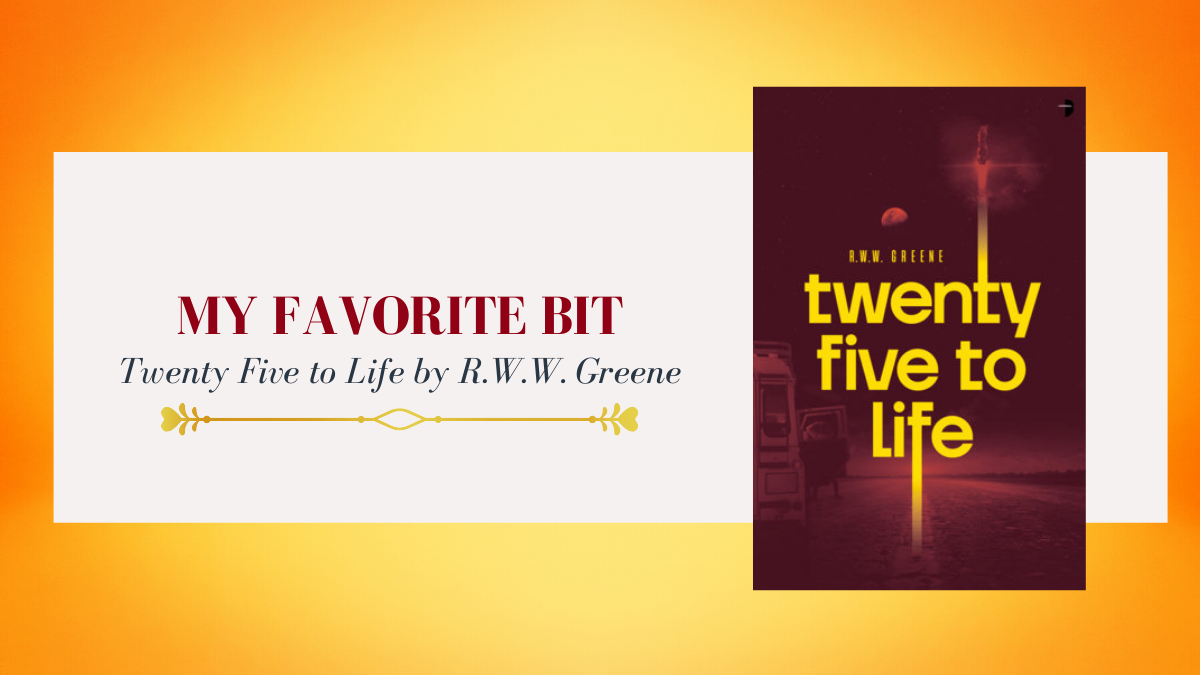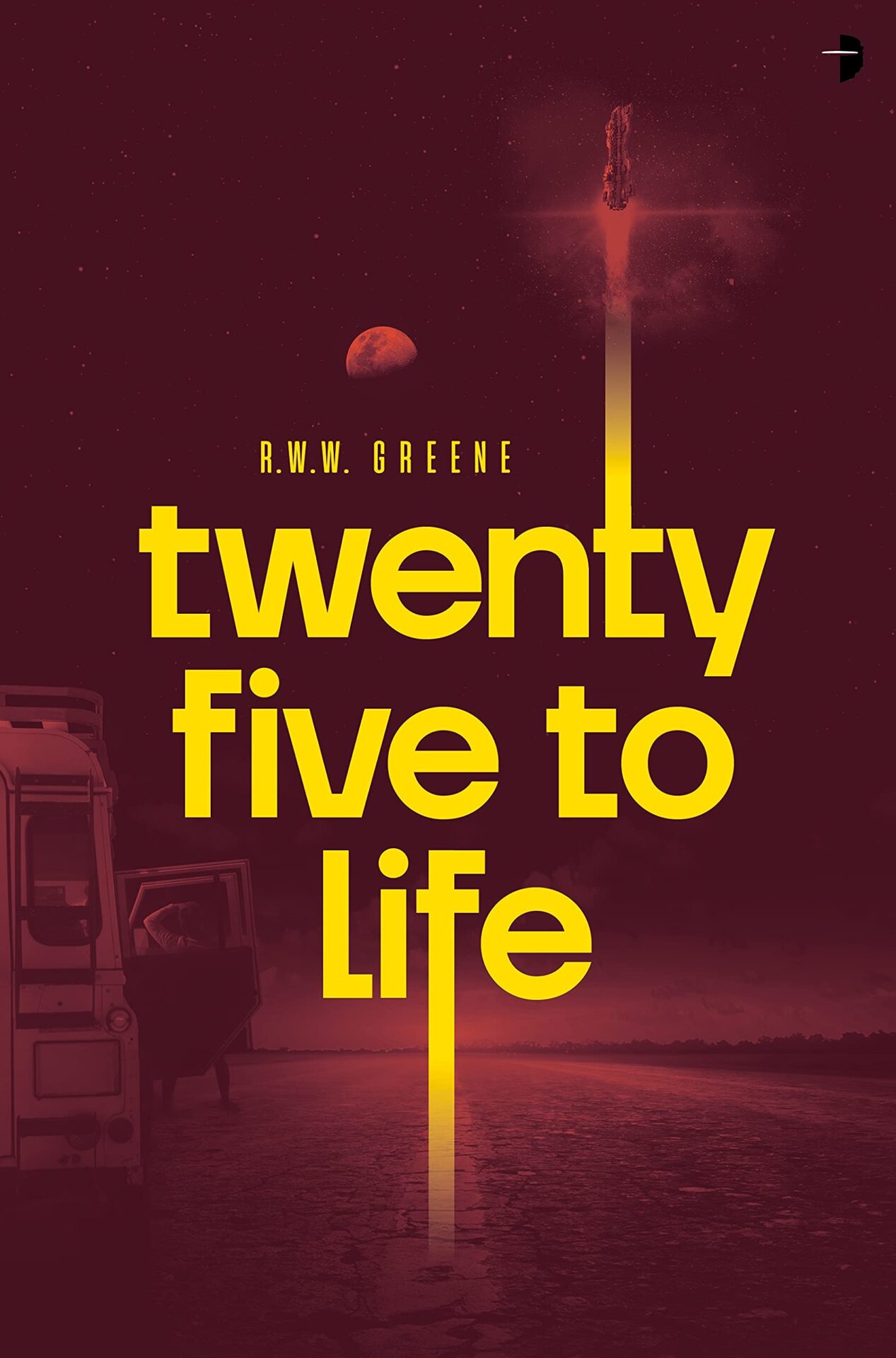
R.W.W. Greene is joining us today to talk about his novel, Twenty-Five To Life. Here’s the publisher’s description:
Life goes on for the billions left behind after the humanity-saving colony mission to Proxima Centauri leaves Earth orbit…but what’s the point? Julie Riley is two years too young to get out from under her mother’s thumb, and what does it matter? She’s over-educated, under-employed, and kept mostly numb by her pharma emplant. Her best friend, who she’s mostly been interacting with via virtual reality for the past decade, is part of the colony mission to Proxima Centauri. Plus, the world is coming to an end. So, there’s that.
When Julie’s mother decides it’s time to let go of the family home in a failing suburb and move to the city to be closer to work and her new beau, Julie decides to take matters into her own hands. She runs, illegally, hoping to find and hide with the Volksgeist, a loose-knit culture of tramps, hoboes, senior citizens, artists, and never-do-wells, who have elected to ride out the end of the world in their campers and converted vans, constantly on the move over the back roads of America.
What’s R.W.W. Greene’s favorite bit?

R.W.W. GREENE
Did I know in 2010 Richard Branson was going to fly into space a mere month before Twenty-Five to Life sprang from the presses?
Of course not, but I had a writer’s hunch that Branson would do something like it soon, which is why, in early drafts of Twenty-Five, I named one of the six Proxima Centauri-bound colony ships after the English billionaire. In fact, in that much retooled manuscript, the ship launched by North America was named the Sam Walton, after the founder of Wal-Mart. Jeff Bezos was less of a name when I started the thing, and even now I’m not convinced he has the community spirit necessary to fund a colony mission.
I’ve lost track of the things I needed to change and update in the manuscript because of the present’s steady march into the future. The seamless virtual community space that Julie Riley, the main character of Twenty-Five, and many of her peers are hooked on was called “Hangouts” until Google released a product by that name in 2013. No doubt there was already some sort of roving van community in 2010, but the Volksgeist motored into my mind before #vanlife found its way into the public sphere.
That’s the thrill and the panic of writing near-future sci-fi – My Favorite Thing™ as it were. It’s either a race against the clock to get ideas on the page and in front of readers before the present catches up, or a struggle to figure out how to smoothly incorporate current events. I got Tasty Paste into a story in 2012, and I just might have cornered the market on “buggets” – bug nuggets – with Twenty-Five. Meanwhile, I can’t imagine how many WIPs had to be rewritten because of the Trump administration and COVID 19, but I know every near-future story going forward will have to deal with them in some way.
And now the billionaires have made it to space. A lot of writers saw it coming, but now it’s an unavoidable fact. Where does reality go from here? Will we see something akin to the paranoid largess of Michael Flynn’s billionaire protagonist Mariesa Gorley van Huyten in his Firestar series – terrified of falling meteors, she takes over the American school system to reinvigorate the sciences and the space race. Or will it be more like the castle in the clouds occupied by the rich and powerful in the movie Elysium – protagonist Max Da Costa can only get the healthcare he needs on the space station where all the fancy people live? Is there a third option? Did a Bezos analog build The Ark for The 100?
It ain’t easy keeping up with the present. Three- and four- and five-G smartphones. The Mars rovers. Quantum computing. Climate change. The U.S. military dropping fitness standards because kids are playing video games not tag, and allowing tattoos because even grandma has one. Autonomous cars. CRISPR. The single-minded artificial intelligence we call Amazon. Smartphone apps that use photo analysis to tell you if your cat is in pain…Hell, Fortnite!
Second-Life had some promise, but the virtual-community created by this battle-royale game launched Star Wars canon and is hosting concerts by Lady Gaga, Arianna Grande, Travis Scott, and Marshmello. And all the kids are there already! It’s the closest thing to the Matrix, the Metaverse, or the Oasis (or ThirdEye) we’ve seen yet.
I read a lot. I also work at a university and watch out for events that pertain to tech, science, and future society. My spouse works at a fancier university, and I’ve been able to piggyback on that to attend conferences on artificial intelligence and the ‘future of work.’ I’m a fiend for Keck Institute Lectures, TED Talks, and Pew studies. Boskone, my neighborhood sci-fi and fantasy convention, usually has a strong science track that I can dip into. So far, it’s enough. I feel like I have about a half step on the present. Maybe a quarter step.
William Gibson once said something to the effect that back in the ’80s he could look ahead a couple of decades, but by the time he got to the Blue Ant series in the early Oughts he could maybe see next Tuesday. I suspect keeping up will get more difficult as I get older, although a pal, who at 76 has thoroughly adopted the smartphone and the Internet of Things, gives me hope.
My Richard Branson made it into space nine years before THE Richard Branson – if you need evidence, check out It Pays to Read the Safety Cards, the short story that began the whole Twenty-Five to Life ride, in the Something Wicked Anthology of Speculative Fiction, Volume II, published April 2013 by Random House Struik. But reality has caught up and kicked my ass so many times…
The race continues!
LINKS:
Twenty-Five to Life Universal Book Link
BIO:
R.W.W. Greene is the author of Twenty-Five to Life (Aug. 24, 2021) and The Light Years (Feb. 2020), both pubbed by Angry Robot Books. He lives in New Hampshire USA, is a proud member of SFWA, and is grateful to Mary Robinette Kowal for sharing her platform.
